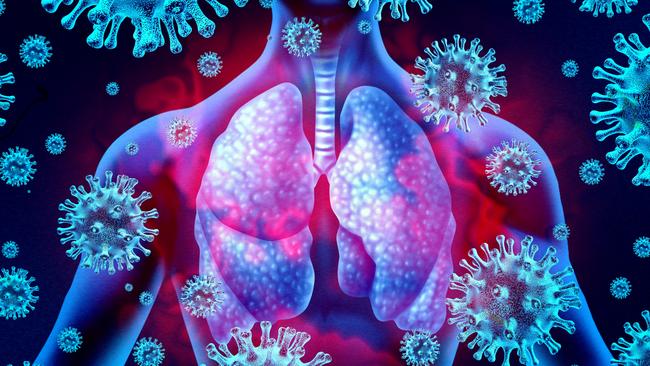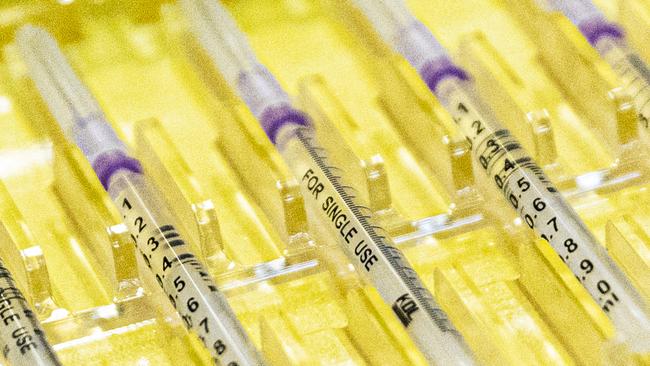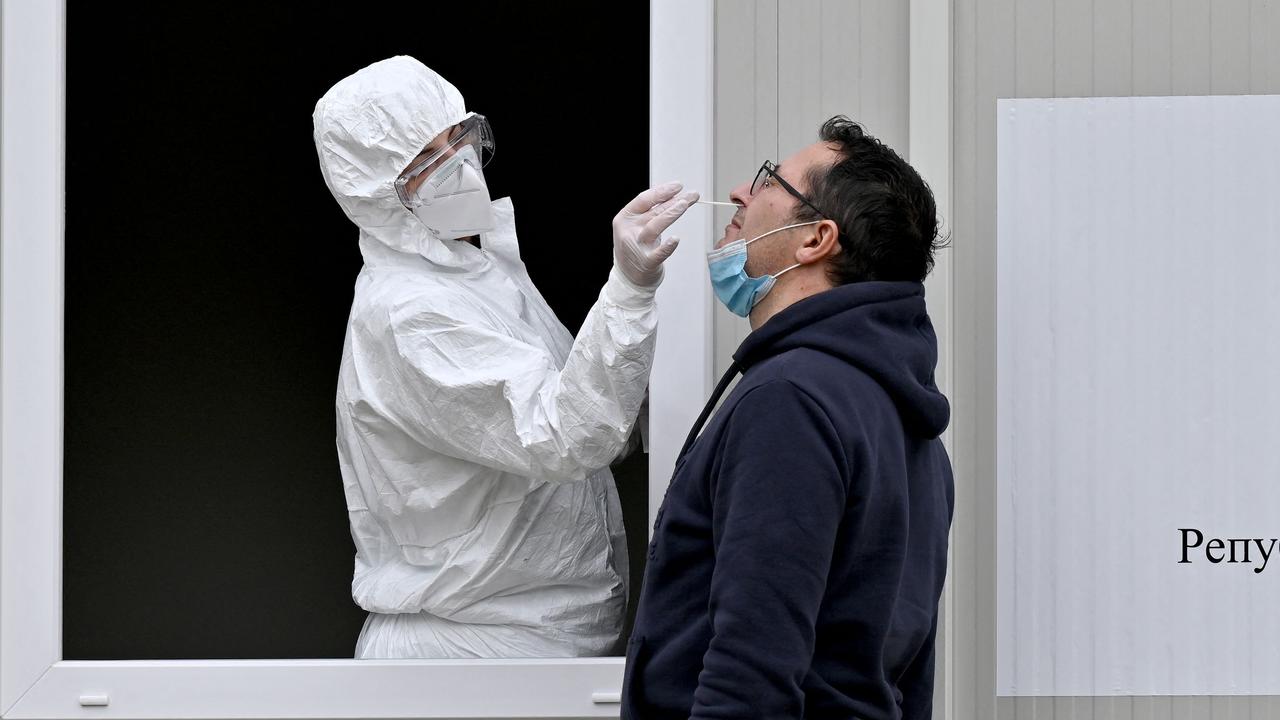Deltacron comes to Australia. What is it and are you at risk?
The first case of Deltacron has been detected in Australia. Here’s what you need to know about the new hybrid Covid-19 variant.
Coronavirus
Don't miss out on the headlines from Coronavirus. Followed categories will be added to My News.
A new strain of Covid-19, dubbed Deltacron, has been detected in Australia, less than a month after the World Health Organisation (WHO) announced the hybrid variant was making its way through Europe.
With the arrival of Deltacron in Australia, along with other Omicron variants, there’s concern Covid complacency and easing restrictions could prompt a rise in cases.
Here’s what you need to know about Deltacron.

WHAT IS DELTACRON?
As the name suggests, Deltacron is a combination of the Delta and Omnicron Covid-19 variants, the two most dominant coronavirus variants globally.
Deltacron was first discovered in February, when the Pasteur Institute in France reported evidence of a new genetic sequence of the virus via global science community GISAID.
The following month, three additional hybrid genetic sequences were reported. Since then, the variant has travelled through Europe, the US and the UK, and now it has landed in Australia.
Biochemistry Professor Luke O’Neill told The Conversation there may be a variety of Deltacron strains.
“Scientists at the Institut Pasteur have said the Deltacron sequences reported in the UK and US have certain differences from those found in other countries,” he said.
HOW DID IT FORM?
Deltacron is what’s known as a recombinant virus. A recombinant virus has genetic material that’s made up of portions from two or more other viruses.
In other words, when an organism is infected with two strains of a virus, it allows them to mix together to create an entirely new one.
“Recombination usually creates a new virus that isn’t viable, as the mixing of different genes can interfere with the virus’s ability to make the proteins it needs to survive. But sometimes one does survive, and that appears to be what’s happened with Deltacron,” Professor O’Neill said.
“Indeed, as the Deltacron hybrids found in the US/UK appear to be different from those found in mainland Europe, it’s possible that this has happened multiple times separately.”

HOW DANGEROUS IS IT?
As the Deltacron variant is so new, it’s difficult to say how the strain will impact the community in terms of spread and severity, but as the World Health Organisation’s Maria Van Kerkhove explained, a recombinant variant of Delta and Omicron wasn’t unexpected, especially given the widespread distribution of both strains.
Ms Van Kerkhove said via Twitter that viruses were designed to evolve.
“The SARs-COV-2 virus changes over time, therefore new variations will inevitably appear,” she tweeted.
WHO enior scientist Soumya Swaminathan shared a similar message via her Twitter account.
“We have known that recombinant events can occur, in humans or animals, with multiple circulating variants of #SARSCoV2. need to wait for experiments to determine the properties of this virus. Importance of sequencing, analytics & rapid data sharing as we deal with this pandemic.”
In a recent press briefing, Ms Van Kerkhove said scientists were currently studying the variant.
“We have not seen any change in the epidemiology, change in severity, but there are many studies that are underway,” she said.

HOW DOES IT COMPARE TO OMICRON AND DELTA?
According to reports, an initial analysis of the variant revealed Deltacron was similar to the Delta strain, but included Omicron’s spike protein which increased transmission, prompting fears the new virus may contain the worst elements of both its parent strains.
But Professor O’Neill told The Conversation it was hard to say in what ways Deltacron would resemble Omicron and Delta.
“Delta and Omicron are quite different viruses,” he said.
“They differ in how they infect cells and how they evade immunity. We still don’t know enough about Deltacron to be able to tell how different it’s going to be to either.”
As for whether Deltacron will displace Omicron or Delta, or the severity of the new disease, it’s currently a case of wait and see.
WHAT OTHER RECOMBINANT VARIANTS ARE THERE?
In addition to the Deltacon variants, known as XD and XF, New South Wales Health also reported one case of a recombinant variant of Omicron BA.1 and BA.2 dubbed, XE.
This hybrid was first detected in the United Kingdom, with WHO reporting at the time that the variant could be the most transmissible so far.
But experts say we should expect further recombinant viruses to occur.
According to the UK Health Security Agency, recombination is not an unusual occurrence and several recombinant SARS-CoV-2 variants have already been identified throughout the pandemic.
“Recombinant variants are not an unusual occurrence, particularly when there are several variants in circulation, and several have been identified over the course of the pandemic to date,” said UKHSA Chief Medical Adviser Professor Susan Hopkins.
“As with other kinds of variant, most will die off relatively quickly.”

WILL MY VACCINE PROTECT ME?
As always, vaccines remain the best way to protect yourself from all forms of Covid-19.
Due to the similarities between Deltacron and Omicron, experts say current vaccine schedules should be just as effective against the new variant.
“We know that vaccines, which are based on the original Wuhan strain of the virus, also protect against severe disease with the more recent variants,” Professor O’Neill said.
“Time will tell whether Delta and Omicron have produced a wild child for us to worry about.”





